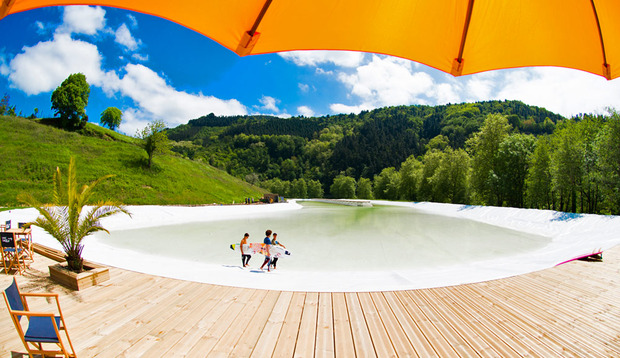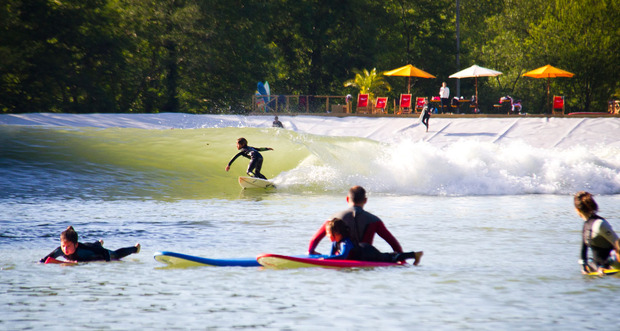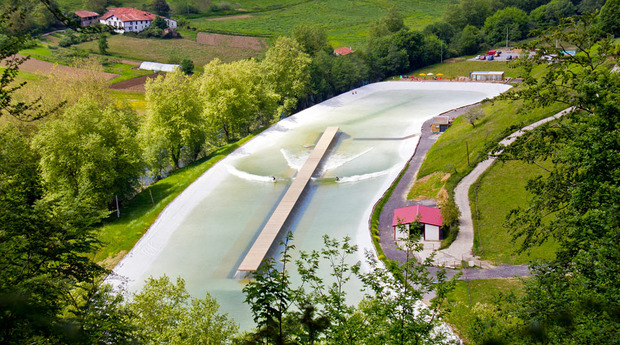Wavegarden 2.0
An in-depth look at the revolutionary artificial surfing wave with founder José Manuel Odriozola


The idea of a wave-pool often calls to mind crowded water-parks with little ripples that are hardly worthy of their name. Spain’s Wavegarden, the emerging leader in wave-pool technology is quickly changing that. Wavegarden creates consistently perfect, surf-able waves with minimal environmental impact and energy output. While the company has been around since 2005, it’s only recently that they unveiled version 2.0—with larger, longer, more powerful waves as seen in this remarkable video. We caught up with Wavegarden CEO José Manuel Odriozola, who was at his testing facility deep in Spain’s Basque Country, to go in-depth into Wavegarden’s performance, technology and global potential.

After seeing surfers in Munich on the Eisbach channel riding the urban, artificial wave and another experience at a snowboarding competition in Lisbon, Odriozola was inspired. “I’ve always thought that the best sports facility is a beach with waves,” he says, “I couldn’t stop thinking that there ought to be a way that surfing could also enjoy a good man-made facility.” Wavegarden’s potential to create long, large waves has continued to grow over the years and is now only limited by its testing facilities.
“Technically, any size is doable but in terms of energy cost we do no recommend anything bigger than two meter faces,” says Odriozola. The wave lagoon can also modified to accommodate longer waves without necessarily creating bigger waves. The physical layout of Wavegarden lagoons are designed to accommodate all levels of surfers. Specially engineered bays in the lagoon act to transform wave energy. As a wave breaks from the outer section—where experts surf steep, fast waves—the bays turn the resultant white water into smooth rolling crests, perfect for beginners. As any surfer knows, there are never enough waves to go around. Luckily Wavegarden is designed to produce 120 waves per hour.

The key to Wavegarden’s patented (though still heavily guarded) technology is a hydrofoil that runs along the bottom of the lagoon to create a swell, or series of surface gravity waves. As the swell moves across the banks of the lagoon, it creates two perfect peaks that break to both the left and right, allowing two surfers to ride the same swell at the same time. The whitewater from the broken waves surfed by the experts is then reformed in the aforementioned inside bays, where beginners can get in on the fun. From here the hydrofoil makes a u-turn, where it creates another identical swell moving in the opposite direction for more surfers to enjoy. Maintenance and operation is minimal, with only a few staff members required to operate the machine and measure the wave output.
Surfers are often an environmentally minded group due to their connection to the ocean. Wavegarden is very conscious of keeping its environmental impact as minimal as possible, both in terms of energy use and its mark on the landscape. “We run entirely on electricity,” Odriozola says, “some of our customers have already stated that they will go for 100 percent renewable electricity.” While the size of wave dictates the amount of energy required, Wavegarden uses on average 270 kilowatts to create 120 waves an hour at about four feet high.

Meanwhile, the impact on the landscape is minimal. The construction of the lagoon is similar to that of a small man-made lake, with no concrete necessary. Nearly all of the wave-making equipment is underground, meaning the harmony of the natural environment is kept intact. While one might expect the equipment to be noisy and off-putting, the only sound one hears is the breaking waves—which, when heard in a mountain setting, can be a bit surreal. “We now have the ability to provide an authentic surfing experience in any location capable of sitting a lagoon,” Odriozola says.
Expect to see Wavegarden‘s technologies in use across the word from Europe to the Middle East, Australia and the US. “We have strategic partners and affiliates in several countries,” Odriozola admits. While pricing will vary with location and time of day, one upcoming site in the UK began its price point at $23 per hour including an $8 entry fee.
Images courtesy of Wavegarden









